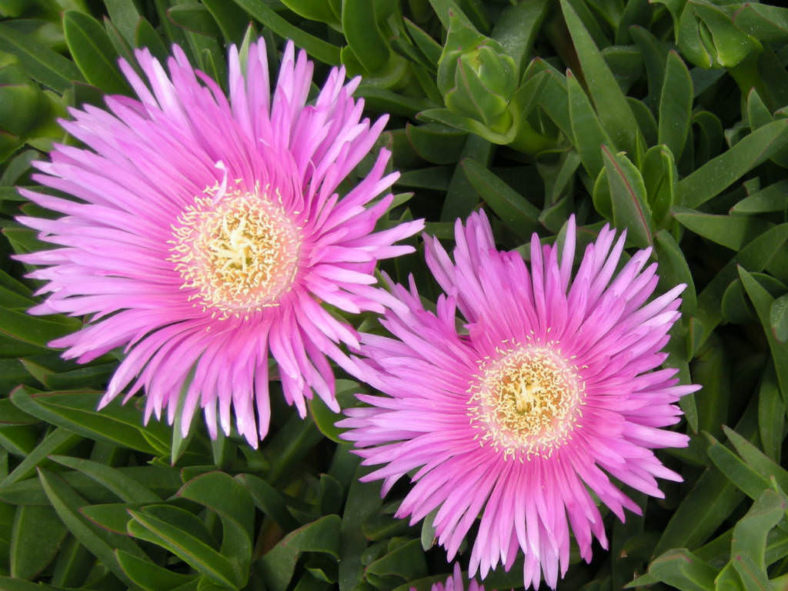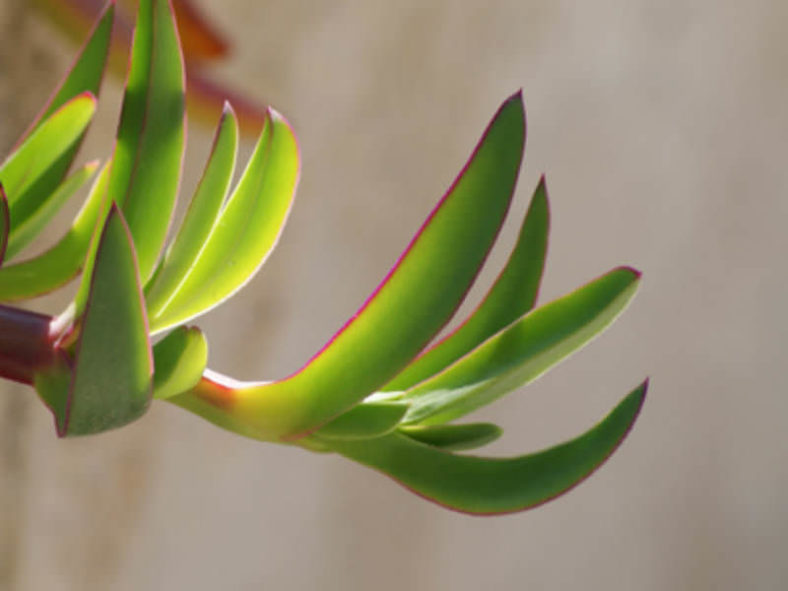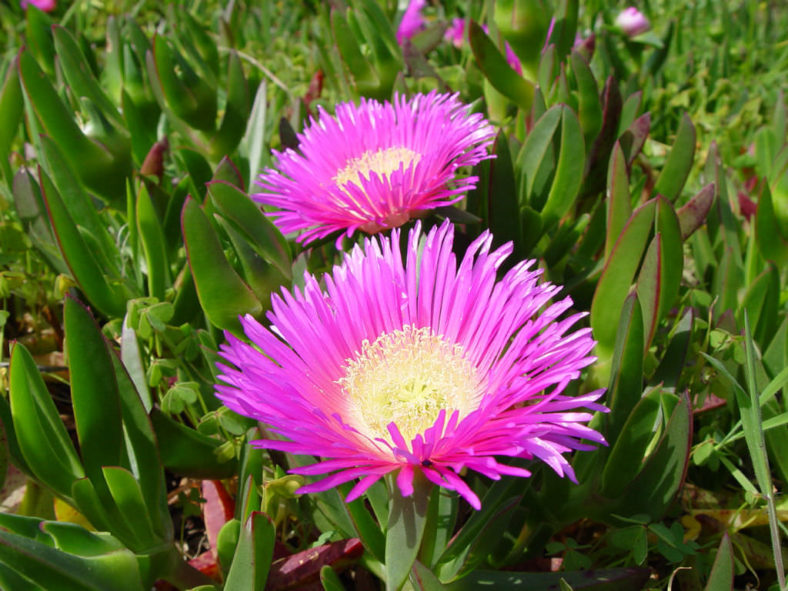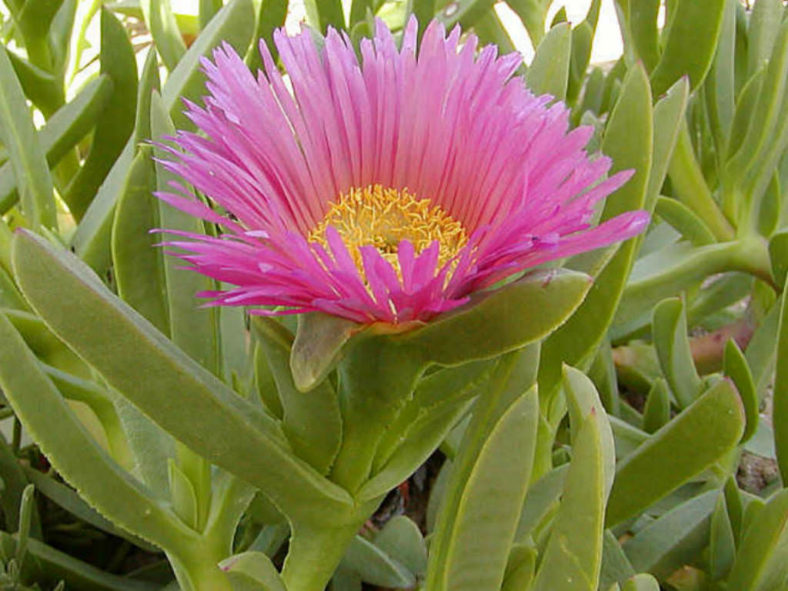Scientific Name
Carpobrotus acinaciformis (L.) L. Bolus
Common Name(s)
Sally-my-handsome, Giant Pigface, Elands Sourfig, Hottentot Fig, Sour Fig, Horse Fig, Creeping Fig, Pigface, Ice Plant, Highway Ice Plant,
Synonym(s)
Abryanthemum acinaciforme, Mesembryanthemum acinaciforme
Scientific Classification
Family: Aizoaceae
Subfamily: Ruschioideae
Tribe: Ruschieae
Genus: Carpobrotus
Etymology
The specific epithet "acinaciformis" (pronounced "ah-see-na-SEE-for-mis") means "having the form of a scimitar" and refers to the shape of the leaves of this species.
Origin
This species is native to the coastal dunes of the Western Cape, South Africa.
Description
Carpobrotus acinaciformis is a fast-growing succulent that forms a dense mat of trailing stems with yellowish to grass-green leaves, often red-tinged at the edges. The stems can grow up to 3.2 feet (2 m) long. The leaves are triangular in cross-section, arranged in opposite pairs, and can measure up to 5.2 inches (13 cm) long and 0.7 inches (1.8 cm) thick.
The solitary flowers are brilliant pink-violet to dark magenta and can reach a diameter of 6 inches (15 cm). They are daisy-like, with many stamens surrounding a starfish-like stigma, and appear at the end of a short stalk, mainly in spring and summer. The edible fruits are yellow and fragrant when ripe and can grow up to 1.4 inches (3.5 cm) in diameter.

Hardiness
USDA hardiness zones 7a to 9b: from 0°F (-17.8°C) to 30°F (-1.1°C).
How to Grow and Care
Carpobrotus plants are notoriously unfussy. As long as their soil drains well, the soil is allowed to dry out between watering, and the plant receives pinching or pruning to keep it in shape, so little more must be done.
The only serious health threats to the plant are spittlebugs and some root and stem rots. You can avoid the rot by minimizing overhead watering when the plant will not dry off before nightfall. The bugs will remove themselves if you spray them with horticultural soap.
Growing Carpobrotus in containers is ideal; you can overwinter them in temperate regions. Just bring the pot in and water it deeply. Cut back the plant, let it dry out, and languish for the winter in a warm location. In spring, resume regular watering and move the plant to a full light situation with some protection from burning rays. Gradually reintroduce the plant to temperatures outdoors until it can tolerate a full day outside.
Learn more at How to Grow and Care for Carpobrotus.
Links
- Back to genus Carpobrotus
- Succupedia: Browse succulents by Scientific Name, Common Name, Genus, Family, USDA Hardiness Zone, Origin, or cacti by Genus
Photo Gallery
Click on a photo to see a larger version.


